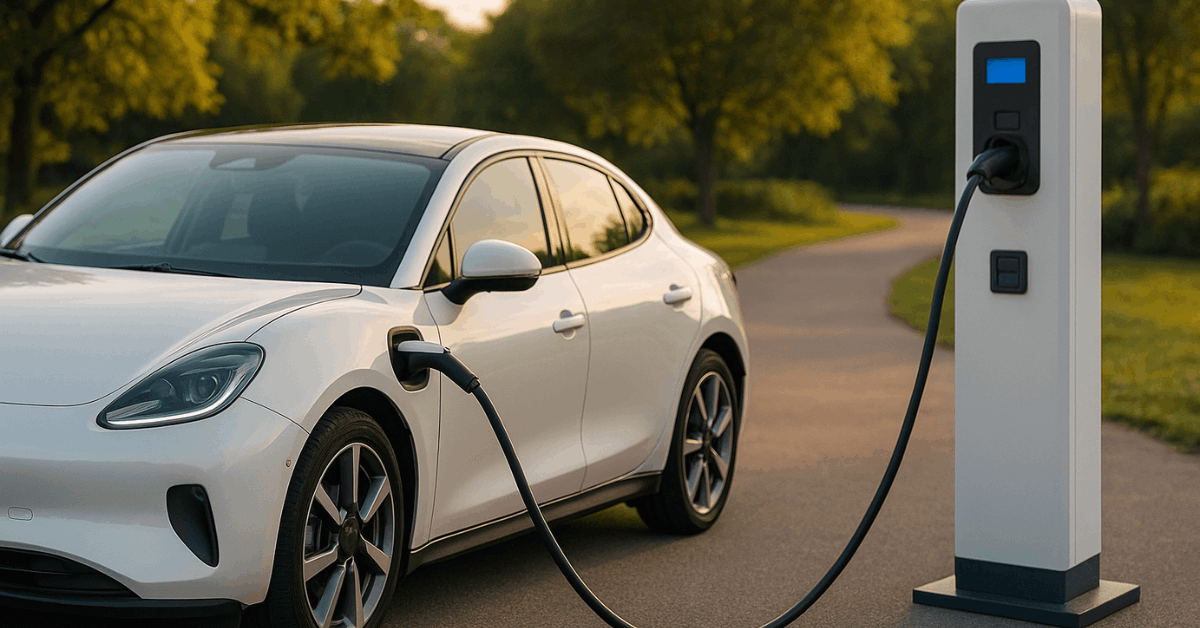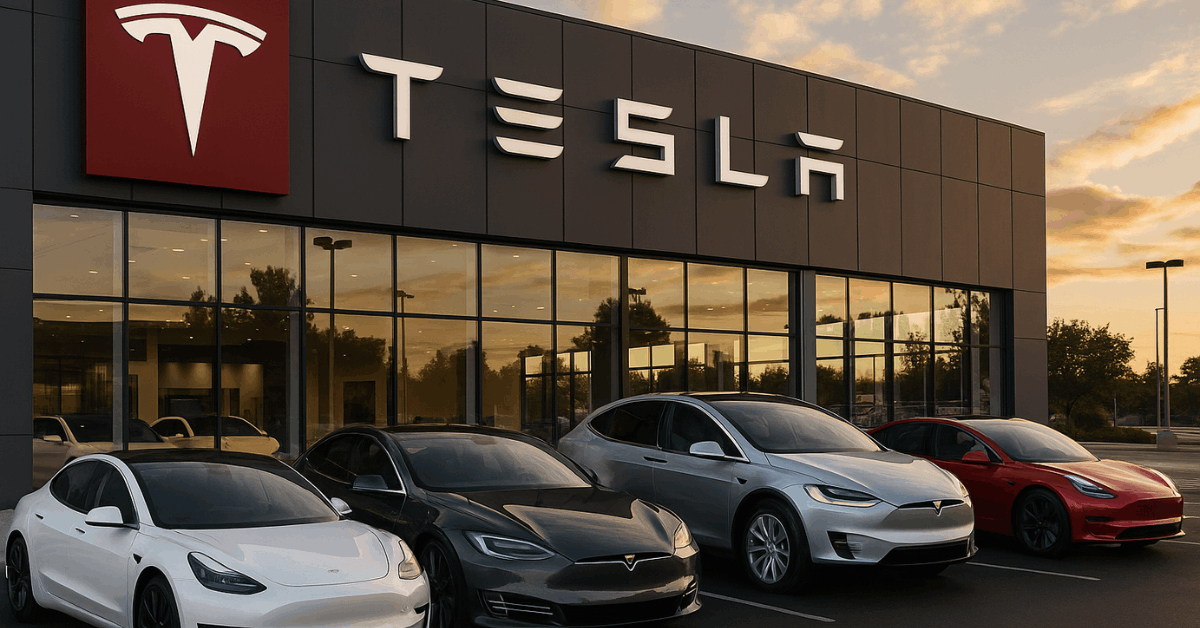Electric vehicles (EVs) have evolved from basic prototypes to advanced machines. The evolution of electric vehicle technology reveals key improvements in battery, software, and charging systems.
Understanding this transformation helps you see how EVs became practical and competitive. They now play a major role in shaping global transportation.
A Brief History of Electric Vehicles
Electric vehicles have a longer history than many realize. Understanding their early development helps explain today’s momentum.

The Early Days (1830s–1900s)
The first electric carriage appeared in the 1830s in Scotland. By the late 1800s, electric taxis operated in London and New York.
EVs were popular for their smooth ride and ease of use. Gasoline cars eventually overtook them due to longer range and faster refueling.
Battery limits and poor infrastructure held EVs back. By the 1920s, internal combustion engines dominated the roads.
Decline and Dormancy (1910s–1970s)
Gas-powered cars became cheaper and more practical. The Model T from Ford changed the automotive landscape. EVs faded due to poor battery storage and slow speeds.
Innovation in electric drivetrains stalled. The oil industry also grew stronger, discouraging EV development. EVs remained largely forgotten for decades.
The Comeback Era: 1990s to Early 2000s
After a long pause, EVs began re-emerging in the 1990s. This comeback was driven by environmental policy and technological curiosity.
GM EV1 and Early Prototypes
General Motors launched the EV1 in 1996, marking a major turning point. It offered zero emissions and smooth electric performance.
However, GM canceled the program citing limited demand. Most vehicles were recalled and crushed.
Still, the EV1 proved full-size EVs were feasible. It sparked interest in reviving electric mobility.
Government Incentives and Emission Standards
California enforced Zero Emission Vehicle (ZEV) mandates in the 1990s. Automakers had to produce clean vehicles to sell in the state.
These rules prompted experiments with electric drivetrains. Federal and state subsidies followed later.
Public interest grew alongside climate awareness. This policy support laid the groundwork for future EV growth.
The Lithium-Ion Battery Revolution
EV adoption accelerated due to better batteries. The shift to lithium-ion was a game-changer.
Battery Tech Breakthrough (2008–2015)
Lithium-ion batteries made EVs more practical. They offered better energy density and lighter weight.
The Tesla Roadster, launched in 2008, used lithium cells to achieve over 200 miles of range. This was a significant leap from past EVs.
It showed that performance and electric power could coexist. Range anxiety began to fade for early adopters.
Cost Reduction and Energy Density Improvements
Battery costs dropped over 85% from 2010 to 2020. Energy density improved steadily during this time. These trends made EVs more affordable to manufacture.
More models became available for different budgets. Long-range EVs entered the market. Mass adoption became realistic.
The Role of Tesla and Market Disruption
Tesla played a central role in reshaping how the world sees electric vehicles. Its success disrupted traditional automakers.
Tesla’s Strategy and Product Line (2012–2020)
Tesla introduced the Model S in 2012, followed by the Model X and Model 3. The company focused on fast charging, software updates, and sleek design.
Vehicles received over-the-air improvements post-purchase. Performance rivaled or exceeded luxury gas cars.

Tesla earned a loyal customer base and media attention. Its brand became synonymous with EV innovation.
Market Influence and Competitor Response
Legacy automakers accelerated EV programs in response. Companies like Volkswagen, Ford, and GM announced new EV lineups. More R&D funds shifted toward electric platforms.
Battery partnerships formed across the globe. The EV transition gained industry-wide momentum. Tesla’s presence forced faster innovation.
Global Expansion and Government Support
Governments worldwide began backing EV adoption. They saw benefits for the environment and industry growth.
China’s EV Push and Market Domination
China offered strong incentives for both buyers and manufacturers. Companies like BYD and NIO emerged as global EV players.
The government funded public charging networks extensively. Domestic demand skyrocketed. China became the world’s largest EV market. Their policies shaped global EV trends.
EU, U.S., and Japan Policy Changes
The European Union set clear emission goals and ICE bans. The U.S. passed infrastructure bills and offered tax credits. Japan supported hybrids and EV development.
These governments invested in battery factories and research. National goals are aligned with environmental targets. Regulations pushed automakers to invest heavily.
Charging Infrastructure Developments
Charging networks are essential for EV success. Infrastructure improved rapidly to meet rising demand.
Fast Charging and Ultra-Fast Charging
Early EVs charged slowly, sometimes overnight. Today’s DC fast chargers can add 80% range in 30 minutes.
Networks like Tesla Superchargers and Electrify America expanded across highways. Fast charging cuts down on travel delays.
Standards like CCS and CHAdeMO were widely adopted. Charging became more convenient for daily and long-distance use.
Home Charging and Smart Grid Integration
Most EV owners charge at home. Wall connectors now offer Level 2 speeds, filling a battery overnight. Smart charging systems adjust based on electricity rates.
Solar panel integration is also standard. Vehicle-to-grid (V2G) features are emerging. These help stabilize the local power supply and reduce costs.
Next-Generation Battery Technologies
Better batteries continue to push EV capabilities forward. New chemistries may solve existing pain points.
Solid-State Batteries
Solid-state batteries replace liquid electrolytes with solid material. They are safer and offer higher energy storage. Leading firms like Toyota and QuantumScape are investing heavily.
Charge times could drop to under 15 minutes. These batteries may double the driving range. Commercial rollout is expected around 2027.
Alternative Materials and Recycling
Lithium iron phosphate (LFP) is gaining traction. It avoids cobalt and is cheaper to produce. Battery recycling programs now recover over 90% of key materials.
Second-life battery use supports energy storage. Sustainability is a primary R&D focus. Circular systems will support long-term EV growth.
Autonomous Driving and Software Integration
Modern EVs are becoming smart, connected machines. Automation and software are key differentiators.
Advanced Driver Assistance Systems (ADAS)
Many EVs now offer lane-keeping, auto braking, and adaptive cruise control. Tesla’s FSD Beta, Waymo, and Mobileye are pushing boundaries.
Radar, lidar, and vision systems enable partial autonomy. Software updates improve accuracy over time. Regulators are still defining safety rules. Autonomous EVs are coming, but slowly.
EVs as Software-Defined Vehicles
EVs are updated like smartphones. Automakers release new features remotely. Apps control climate, location, and security.
Diagnostic data helps improve future models. Cybersecurity is critical as connectivity expands. Software now drives user experience.
Vehicle-to-Everything (V2X) Technology
EVs can do more than drive. They can power homes, grids, and external devices.
Vehicle-to-Grid (V2G)
V2G lets EVs send electricity back to the grid. This helps balance supply during peak demand. Fleets of EVs can serve as mobile storage.
Utilities are testing this in pilot programs. V2G requires two-way chargers and smart controls. Adoption depends on cost and regulation.
Vehicle-to-Home (V2H) and Vehicle-to-Load (V2L)
Some EVs can power homes during outages. Others run appliances and tools directly. This is useful for off-grid work or emergencies.
Nissan and Hyundai already offer V2L features. Power output ranges from 1.5 kW to over 9 kW. Users gain flexibility beyond transportation.
Sustainability and Environmental Impact
EVs aim to reduce emissions, but the impact varies. Life cycle analysis is important for transparency.
Life Cycle Emissions vs ICE
EVs produce fewer emissions over their lifespan. Manufacturing emissions are higher at first. As grids shift to renewables, EVs become cleaner.
ICE cars emit continuously from fuel. Carbon tracking tools show EV advantages clearly. Cleaner production and materials improve this further.
Battery Recycling and Second-Life Use
Battery packs don’t go to waste after cars. They are reused in solar storage or grid systems. Recycling cuts down on raw material mining.
Companies reclaim lithium, nickel, and cobalt. Governments support recycling programs globally. This closes the loop on EV sustainability.
Challenges and Limitations Today
EVs are advancing, but not without hurdles. Adoption depends on solving several key issues.
Charging Time and Infrastructure Gaps
Long charging times still frustrate some users. Fast chargers are not everywhere yet. Rural areas face service gaps.
Public stations may be occupied or broken. Urban planning must include more EV infrastructure. Battery swapping may help in some regions.
Battery Degradation and Range Concerns
All batteries lose capacity over time. EVs show a 10-15% range loss after 8 years. Heat and frequent fast charging accelerate this.
Automakers offer battery warranties up to 8 years. Education helps users extend battery life. Innovation continues to reduce degradation.
The Future of EV Technology (2025–2035)
EV tech is far from finished. The next decade holds major breakthroughs.
Electric Aircraft and Long-Haul EV Trucks
Companies are testing electric aircraft for short-haul flights. EV trucks like the Tesla Semi are entering logistics.
Battery packs are growing in capacity. Faster charging supports larger vehicles. Aviation still faces weight challenges. Ground freight will be electrified sooner.
Integration with Smart Cities and AI
Smart cities will coordinate EV fleets using AI. Autonomous cars will manage traffic and parking. Sensors and data will improve road efficiency.
EVs will interact with roads, signals, and buildings. Clean, shared mobility will become common. This will reshape urban life.
Final Thoughts: Embracing the Electric Future
The evolution of electric vehicle technology reflects steady progress driven by innovation and real-world demand. From early carriages to grid-integrated vehicles, the transition is now irreversible.
As battery prices drop and infrastructure expands, EVs are becoming dominant. Understand the shift, evaluate your choices, and be ready for an electric future.



